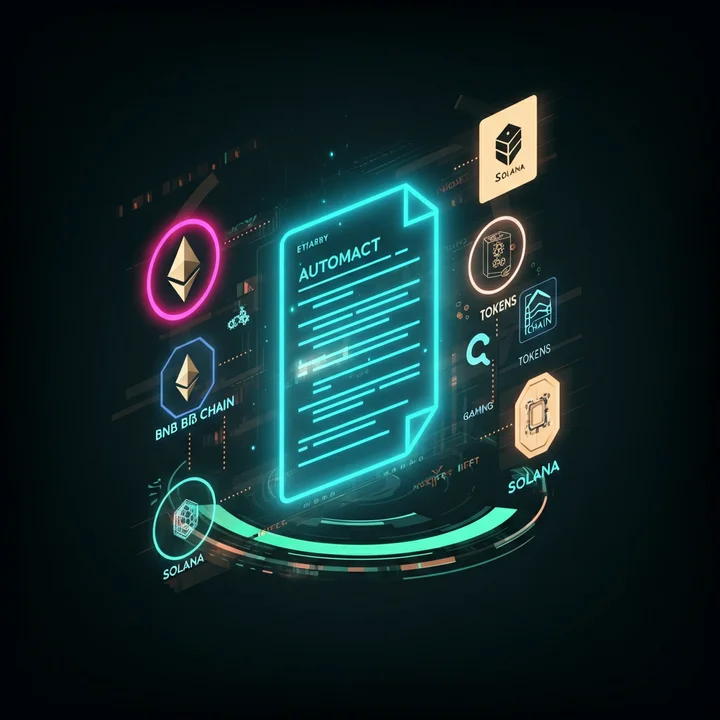Decentralized applications (DApps) are revolutionizing the way we think about the web. Built on blockchain, these applications offer transparency, security, and true ownership for users. Ethereum, as one of the leading blockchain platforms, is the perfect place to start developing your first DApp. Whether you're looking to create something small or join the ranks of blockchain innovators, this guide will walk you through the process step by step.
What You'll Learn
By the end of this guide, you'll know how to:
Set up your development environment.
Write and deploy your first smart contract.
Connect your frontend to Ethereum with Web3.js or Ethers.js.
Host your DApp and launch it on the Ethereum mainnet.
Prerequisites
Before jumping into development, ensure you meet the following requirements:
Basic Coding Knowledge
You should be familiar with JavaScript and general programming concepts.
Wallet Setup
Install and configure a wallet like MetaMask, which you'll use to interact with the Ethereum blockchain during development.
Once you've checked these boxes, you're ready to start building!
Development Tools You’ll Need
To create a functional DApp, you’ll rely on several tools and technologies. Here are the essentials:
Solidity
Solidity is Ethereum's primary programming language, used for creating smart contracts. If you're new to Solidity, Solidity docs are your best friend.
Hardhat or Truffle
Both Hardhat and Truffle are frameworks that simplify Ethereum development. Hardhat offers more customization and a modern developer experience, while Truffle provides a suite of tools ideal for beginners.
Ganache
Ganache is a private Ethereum blockchain used for testing. It allows you to run your smart contract locally without spending real Ether.
Now that you have the tools lined up, let's move on to creating your DApp.
Step-by-Step Guide to Building Your First DApp
Step 1: Smart Contract Creation
Start by writing the core of your DApp, the smart contract. This code will define the logic and rules of your decentralized application.
Create a new project folder and initialize it as a Hardhat or Truffle project. For Hardhat:
mkdir my-first-dapp
cd my-first-dapp
npx hardhatCreate your first Solidity contract. Save the following as
MyFirstContract.sol:
// SPDX-License-Identifier: MIT
pragma solidity ^0.8.0;
contract MyFirstContract {
string public message;
constructor(string memory message) {
message = message;
}
function setMessage(string memory newMessage) public {
message = newMessage;
}
}This contract enables users to store and update a message on the blockchain.
Step 2: Compiling and Deploying to Testnet
Once your smart contract is ready, compile it and deploy it to a test blockchain.
Compile your contract:
npx hardhat compileDeploy to a test network like Rinkeby or Goerli:
Configure a test network in your Hardhat project by editing
hardhat.config.js.Use a deployment script. Create
deploy.js:
const hre = require("hardhat");
async function main() {
const MyFirstContract = await hre.ethers.getContractFactory("MyFirstContract");
const contract = await MyFirstContract.deploy("Hello, Ethereum!");
await contract.deployed();
console.log("Contract deployed to:", contract.address);
}
main().catch((error) => {
console.error(error);
process.exit(1);
});- Run the script:
npx hardhat run scripts/deploy.js --network rinkebyYou’ll receive the deployed contract’s address. This address is essential for interacting with the contract.
Step 3: Connect the Frontend with Web3.js or Ethers.js
Now, build a user interface (UI) for your DApp. Use Web3.js or Ethers.js to connect this UI with the Ethereum blockchain.
Install Web3.js or Ethers.js:
npm install web3 ethersCreate a simple HTML file:
<!DOCTYPE html>
<html>
<head>
<title>My First DApp</title>
<script src="web3.min.js"></script>
</head>
<body>
<h1>Interact with Ethereum</h1>
<button onclick="connectWallet()">Connect Wallet</button>
<p id="message"></p>
<script>
async function connectWallet() {
if (window.ethereum) {
window.web3 = new Web3(window.ethereum);
await window.ethereum.enable();
const accounts = await web3.eth.getAccounts();
alert("Connected account: " + accounts[0]);
} else {
alert("No Ethereum wallet detected!");
}
}
</script>
</body>
</html>Use the deployed contract address and ABI to interact with the smart contract.
Step 4: Hosting the Frontend
To make your DApp accessible, host the frontend using decentralized storage platforms like IPFS or Fleek.
Install IPFS:
npm install -g ipfsAdd your project folder to IPFS:
ipfs add -r /path/to/your/projectYou’ll get a unique CID (content identifier). Use this to access and share your hosted application.
Step 5: Testing and Debugging
Test your DApp rigorously. Use Ganache for local testing and Hardhat’s debugger for Solidity troubleshooting.
Start Ganache:
ganache-cliPoint your deployment and testing scripts to this local blockchain for faster (and free) iterations.
Step 6: Deployment to the Ethereum Mainnet
Once everything is tested and working as expected, deploy your DApp to the Ethereum mainnet. Alternatively, use Layer 2 solutions like Arbitrum or Optimism for faster and cheaper transactions.
Ensure you have enough ETH in your wallet for deployment.
Update your Hardhat configuration to point to the mainnet.
Run the deployment script:
npx hardhat run scripts/deploy.js --network mainnet
Your DApp is now live for the world to use!
Common Pitfalls and Best Practices
To ensure a smooth experience, keep these tips in mind:
Gas Optimization
Always optimize your smart contracts to reduce transaction fees.
Error Handling
Test every possible edge case to avoid errors during live operations.
Security
Audit your smart contracts to prevent vulnerabilities and hacks.
Unlock the DApp World
Congratulations! You’ve built your first decentralized application on Ethereum. With the strategies and tools outlined above, you’re equipped to explore and innovate in this exciting space. Remember, DApp development is a continuous learning process, so stay curious and keep experimenting.
Start creating remarkable DApps today by exploring beginner-friendly resources and advanced tools alike!



